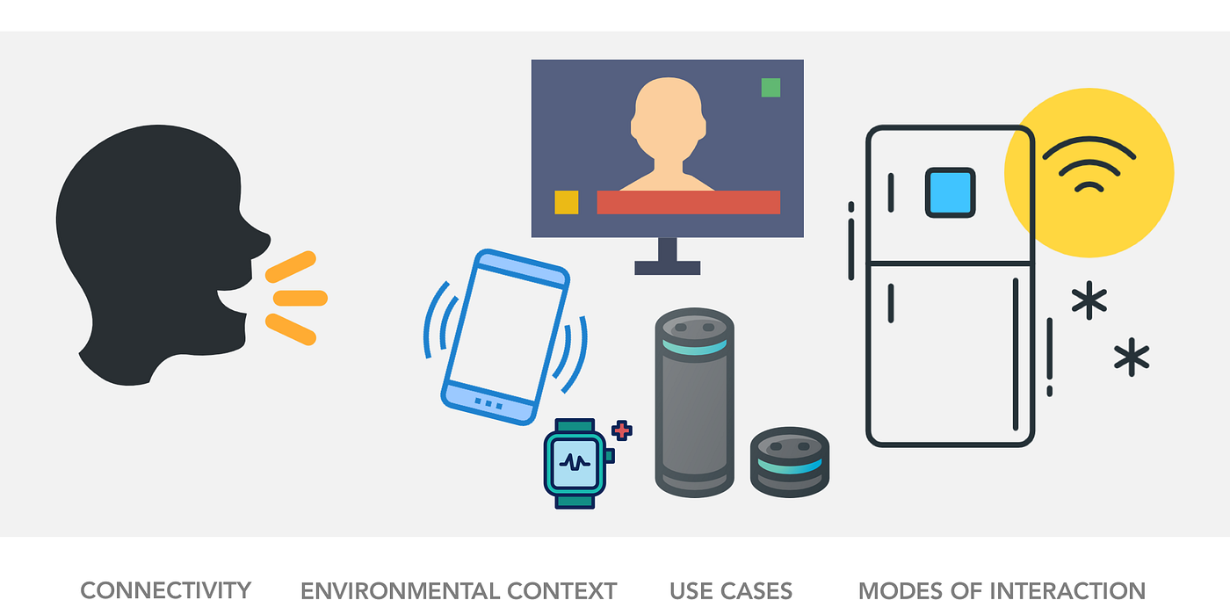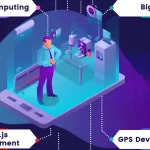
Voice User Interfaces (VUI): The Future of Seamless Human-Computer Interaction
- Post
- August 7, 2023
- UI Design, UI/UX Design, Web Design
- 0 Comments
As technology becomes more integrated into our daily routines, the need for more intuitive and natural ways of interacting with machines has become evident. This is where VUIs step in, offering a seamless way for users to communicate with devices using spoken language. With the rise of virtual assistants like Siri, Google Assistant, and Alexa, VUIs are no longer confined to science fiction; they are here, and they are shaping the way we interact with technology.
Understanding VUIs: A Glimpse into the Technology
VUIs employ Automatic Speech Recognition (ASR) technology to convert spoken language into text, and then Natural Language Processing (NLP) algorithms to interpret and respond to the input. These technologies have come a long way, enabling VUIs to understand context, accents, and even user emotions, making interactions feel more human-like.
The Benefits of VUIs
Accessibility and Inclusivity:
VUIs open up technology to a wider range of users, including those with disabilities or limited literacy. This inclusivity is a powerful stride towards making technology accessible for all.
Seamless Multitasking:
With VUIs, tasks can be completed hands-free, allowing users to multitask effortlessly. Whether you’re cooking, driving, or exercising, VUIs provide a convenient way to interact with technology.
Natural Interaction:
Speaking is the most natural form of communication for humans. VUIs leverage this innate ability, making technology feel less like a tool and more like a conversation.
Efficiency:
VUIs can accelerate tasks like setting reminders, sending messages, or making calls. This efficiency can streamline daily routines and enhance productivity.
Contextual Understanding:
Modern VUIs can comprehend context, which leads to more accurate responses. This contextual awareness is vital for delivering meaningful interactions.
Challenges and Evolution of VUIs
While VUIs hold immense potential, they also face challenges. Accents, background noise, and misinterpretations can still pose problems. However, with advancements in AI and machine learning, these obstacles are being addressed, and VUIs are continually improving.
VUI in Various Industries
Healthcare:
VUIs can simplify medical record keeping, appointment scheduling, and even provide medication reminders, enhancing patient care.
Automotive:
Voice commands for navigation, entertainment systems, and hands-free calling make driving safer and more convenient.
E-Commerce:
VUIs offer personalized shopping experiences, helping users find products, make purchases, and track orders effortlessly.
Smart Homes:
Controlling lights, thermostats, and home security systems through VUIs adds a layer of convenience and automation to daily life.
VUI Design and Development
Creating effective VUIs involves meticulous design. It’s crucial to understand user needs, plan conversational flows, and anticipate user queries. UI designing tools and templates play a pivotal role in crafting user-friendly interfaces that engage and guide users through interactions.
Future Outlook: Where VUIs are Heading
The trajectory of VUIs suggests a future where they seamlessly integrate with our lives. As AI improves, VUIs will better understand user intent, leading to more natural conversations and interactions. Integration with other emerging technologies like Augmented Reality (AR) and Virtual Reality (VR) could further enhance the VUI experience.
Final Words
Voice User Interfaces represent a transformative leap in human-computer interaction. By leveraging speech recognition and natural language understanding, VUIs are revolutionizing how we engage with technology. From accessibility to efficiency, these interfaces offer a range of benefits that have the potential to reshape various industries and improve our daily lives.
Commonly Asked Questions
Q1: How accurate are VUIs in understanding accents?
A1: VUIs have made significant strides in understanding diverse accents and languages. While challenges remain, advancements in technology have improved their accuracy.
Q2: Can VUIs handle complex tasks?
A2: Yes, VUIs are becoming more adept at handling complex tasks. However, their capabilities depend on the specific platform and the level of integration with other systems.
Q3: Are there security concerns with VUIs?
A3: Security is a consideration with any technology. VUI developers prioritize data privacy, and users are encouraged to stay informed about privacy settings and permissions.
Q4: Can VUIs replace traditional user interfaces?
A4: While VUIs offer unique advantages, they might not replace traditional interfaces entirely. The two can complement each other, providing users with diverse interaction options.
Q5: How can businesses leverage VUIs for customer engagement?
A5: Businesses can integrate VUIs into customer support, making it easier for users to get information and assistance. VUIs can also enhance e-commerce experiences by offering personalized recommendations and order tracking.



